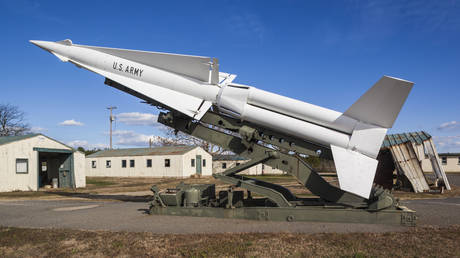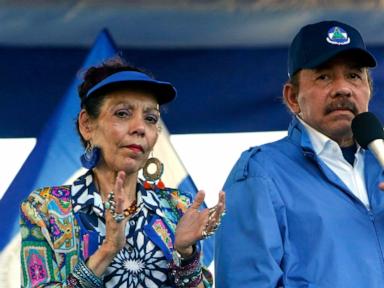ARTICLE AD BOX
CATARROJA, Spain — Lorena Silvent remembers exactly where she was on Oct. 29 last year when deadly floods struck the Valencia region, leaving 228 victims in their wake.
The mayor of Catarroja was standing in her office when she received a call from the chief of police warning her that parts of the city, a suburb just south of Spain’s third-largest metropolis, were flooding. “When I looked out the window, I could already see a brown stream starting to flow down the main street that crosses the city center. Within minutes, it had become a rushing river that carried off everything in its path — first trash cans, then cars.”
Some 200 people sought refuge in the upper floors of the city hall building that night. And when the waters receded the following morning, they discovered every building in the municipality had been damaged by the disaster.
Six months after the flood, the mayor is now overseeing a reconstruction effort predicated on the expectation that her city will someday flood again.
Silvent’s government is among the first in Valencia to formally recognize the role of newly formed citizens’ committees in the reconstruction effort. Together, elected officials, bureaucrats and local residents are pioneering a new form of participatory urbanism, empowering residents to reshape the devastated city.
“The next time the waters rise, we want to be prepared to handle them. That requires us to completely revise our approach to urbanism and question many of the things we’ve accepted until now,” the mayor said.
Residents have their say
When the floods hit, Valencians had to rely on one another to survive, giving their neighbors shelter as the water level rose. Faced with an apocalyptic scene as the floodwaters receded, they helped clear each other’s streets and houses of waterlogged furniture and mountains of mud.
Catarroja resident and social educator Raül Camacho Segarra feels the show of civic unity was transformative for his community and others, who all felt betrayed by regional authorities that failed to warn them and were slow to aid in the recovery. “This tragedy generated a social movement of volunteers willing to leap over police barriers to help one another in those crucial days,” he said.
As reconstruction discussions began, locals reflected on the region’s urban development, which was largely driven by speculative schemes that didn’t take factors like existing floodplains into account. Expressing their frustration with past governments that greenlit such projects, they decided to prevent that kind of city-building from happening again.
The result is the citizen-led reconstruction committees established in Catarroja and other flood-hit municipalities throughout Valencia.
Composed of a diverse collective of citizens — some with formal knowledge of architecture, urbanism and public law — these apolitical groups have banded together to have an active say in the recovery process.
“We decided to redirect our anger at the status quo, at the mismanagement of our land and of the floods in which 228 of our loved ones died, and to channel that energy into our constructive demand to play an active role in the reconstruction of our city,” Camacho said.
 Raül Camacho Segarra is a member of Catarroja’s citizen-led reconstruction committee. | Aitor Hernández-Morales/POLITICO
Raül Camacho Segarra is a member of Catarroja’s citizen-led reconstruction committee. | Aitor Hernández-Morales/POLITICOInitially focusing on urgent matters, they presented city hall with a list of priority cases, and Catarroja’s authorities eagerly accepted the input. It was the start of a fruitful collaboration that led the local government to share its draft reconstruction plan with the group and send representatives to its meetings.
Now, the reconstruction committee’s goal is to ensure that the €210 million in public funds allocated to rebuild Catarroja don’t go to waste, Camacho said, evoking the public cash and real estate corruption scandals that have rocked the region in the past.
“We’re talking about a sum that’s five times this city’s annual budget. It’s imperative to have organized citizen oversight.”
A common path
The scale of the Valencia region’s reconstruction challenge is formidable.
According to Mayor Silvent, some infrastructure — like Catarroja’s indoor pool and police station — is set to be rebuilt on higher ground, while buildings like the auditorium will be cleared of waterlogged elements and remodeled to ensure anyone trapped inside can quickly move to safety.
“We’ve also got to figure out how to move the machinery that powers city hall out of the basement and sort out the underground archive,” she said. “It’s a miracle water didn’t seep into it this time. If it had, we would have lost priceless documents, our history.”
Silvent noted the reconstruction process would require accepting that some buildings won’t be restored. “There was a time when every city in this region demanded to have its own theater, sports center, pool,” she said. “Now we’re thinking maybe we’re okay with commuting to the installations in the neighboring town, and having their residents use ours.”
The biggest challenge, however, will be private property in the city’s most vulnerable areas. So far, Silvent’s government has moved to cancel all unapproved construction permits for the riskiest sites, and is in the process of developing regulations to ensure new buildings are designed to handle floods. It’s also trying to reclaim land from the Horta Sud, a vast area of farmland that has historically helped soak up water in extreme weather events.
“This is land people have lately been buying up not because they wanted to cultivate food but because they wanted to engage in real estate speculation. We want it back because reactivating it will give us access to local, healthy food, and because we know irrigation canals can help us evacuate water in future crises,” she explained.
Silvent said she’s confident citizens can help the city make these major changes more effectively. Earlier this month, her municipal government was among the first in the region to grant its local reconstruction committee official recognition, and to incorporate its representatives into administrative sessions, including one overseeing the distribution of public funds to local businesses.
Valencian architect and social worker Júlia Gomar believes the partnership forged here, and between other reconstruction committees and local administrations, is a sign that something good is coming out of the tragedy.
“The flood here was a bit like Covid, in that it exposed how vulnerable we are as individuals, and how much we need those neighbors we often hardly know,” she said.
 Mayor Lorena Silvent said the reconstruction process obliges the city to revise its entire approach to urbanism. | Aitor Hernández-Morales/POLITICO
Mayor Lorena Silvent said the reconstruction process obliges the city to revise its entire approach to urbanism. | Aitor Hernández-Morales/POLITICO“One’s doorstep became the border separating the public spaces where authorities could help, and the private domains where you had to rely on common citizens,” she said, noting that the military units deployed weren’t authorized to clean out homes. “It helped generate a new sense of community that’s now going beyond the initial common feelings of anger and betrayal, and instead becoming an agent for empowerment and change.”
Silvent said that although it can be difficult to “involve the public in public administration,” it’s worth the effort right now.
“We’ve lived through an extreme crisis and people have lost a lot of faith in government. I think we can help repair that relationship by bringing people in and letting them be a part of this process.”
.png)
 2 hours ago
1
2 hours ago
1








 English (US)
English (US)